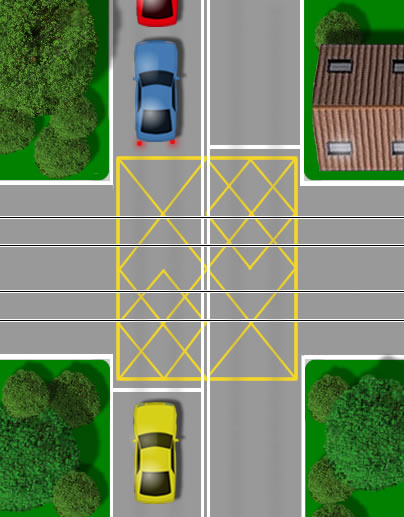The first step for dealing with level crossing safety whether during the practical driving test or throughout any point in your driving career is to locate the crossing.
Warning signs are located before level crossings to alert motorists of the impending hazard. Keen observation of these warning signs allow a driver to prepare for the level crossing and to know what type of crossing they are going to be dealing with.
Approaching the level crossing safely involves knowing the type of crossing ahead depending on the road signs (see level crossing lights and signs) and preparing to slow down or stop.
As with any hazard, always check the rear view mirror before a level crossing. This allows you to assess if there are any vehicles behind you and how close. If a motorists is driving close behind you, ease down your speed before you reach the crossing to allow the vehicle behind a safer stopping distance should the lights on the crossing flash.
Level crossings in busy locations will often have road markings in the form of a yellow box. These yellow boxes are similar to those found at box junctions and are implemented to give an order to motorists that they must not stop in the yellow box area. Stopping on a level crossing is of course highly dangerous and is illegal when a yellow box road marking is in place.
Level Crossing Cameras
Level crossing cameras are being utilised on more UK crossings due to misuse by motorists and pedestrians flouting the safety rules. Level crossings that do not have permanent fixed safety cameras in busy areas often have police Mobile Enforcement Vans in operation. All of which use licence plate recognition technology.
Motorists disregarding the rules face a minimum of a fixed penalty fine of £60 along with three penalty points on their licence. The minimum penalty can be exacerbated depending on the drivers actions and can ultimately lead stopping on a level crossing, to a dangerous or careless driving penalty resulting in huge fines and a driving ban. Pedestrians face a fine of up to £1000 and a criminal record if they are caught misusing a level crossing.

Approaching a Level Crossing
Motorists should always approach a level crossing at an appropriate and safe speed to assess:
- the distance the vehicle is following behind in case you need to stop quickly to allow them a safer stopping distance
- the type of crossing you are approaching. The main level crossing types can be found in the level crossing guide. Extra caution must be used for open level crossings, especially those without lights
- the crossing itself is clear from vehicles. Whether there is a yellow box road marking or no markings at all, ensure there are no vehicles blocking your exit from the crossing as illustrated in the diagram. If in doubt whether you can safely clear the crossing, stop before you enter the crossing area until it is safe to proceed
Breaking down on a level crossing
If you are unfortunate that your vehicle should break down on a level crossing, get yourself and any passengers out of the vehicle as soon as possible. Locate the signal operator telephone number displayed on a sign at the level crossing and phone them. If you are unable to locate a telephone number, call the emergency services.

What is the reason for a sign stating “park here and use phone at crossing”. Also how far should this sign be from railway crossing. Also can a roadway exit over white line at side of road beside crossing,?